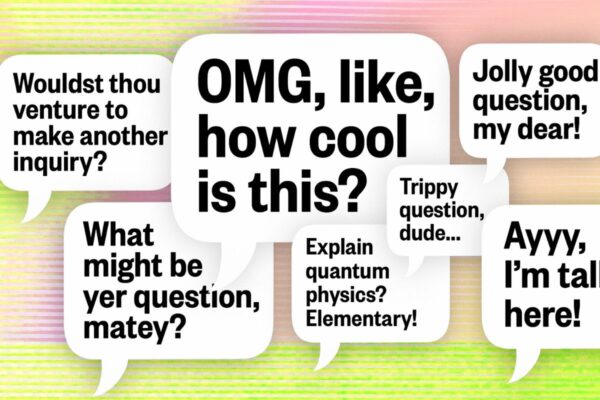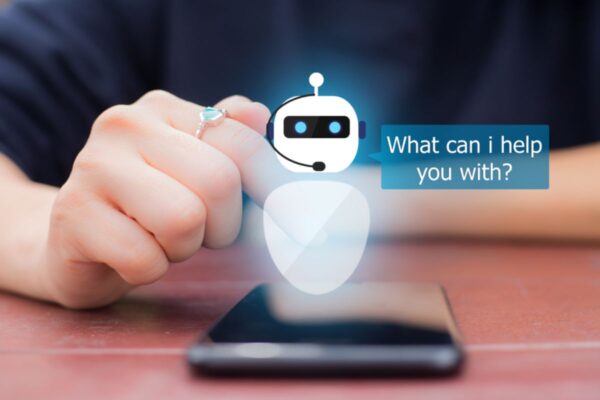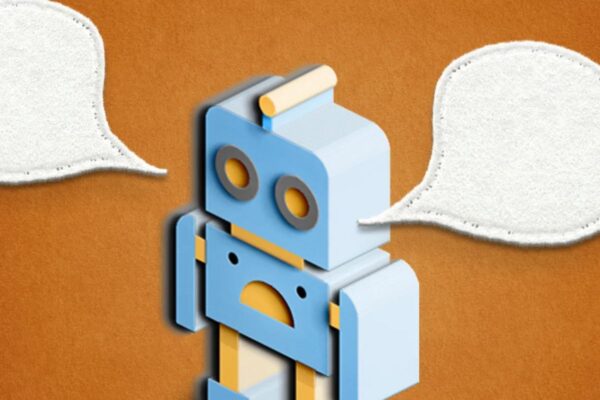We sound exactly like ChatGPT. What Is the Benefit of That? List of Industries that will use ChatGPT in their Marketer business

We sound exactly like ChatGPT. What Is the Benefit of That? List of Industries that will use ChatGPT in their Marketer business
The World War II Enigma code decoder and British computer scientist Alan Turing posed the seemingly absurd question, “Can machines think?” in a 1950 paper. With the uncannily lifelike ChatGPT’s introduction in late last year, we seemed to be getting closer to an answer.
Overnight, a fully functional silicon-based chatbot arose out of thin air. It can engage in any kind of conversation, provide material for commercials, fix software, and crack jokes. Some people are already calling this terrifying new reality one of those “tipping moments” in the evolution of artificial intelligence.
But it has taken some time. In addition, this particular product has been in the works in computer science labs for decades. To test his theory for a thinking machine, Turing envisioned a “game of imitation” in which a human would ask for two responses from people who were in different rooms.
A real human and a computer would be the first and second examples, respectively. The interrogator’s job would be to ask questions using a “teleprinter” to ascertain which was which. The advancement of artificial intelligence was sparked by his essay. The significance of human awareness, however, was ignored by Turing’s reasoning, which sparked a lengthy philosophical debate.
If a computer could mimic thinking while being ignorant of it, could it be said to be capable of doing so?

For a long time, these more critical questions were overshadowed by the practical task of designing a tool that could play the imitation game. Human language posed the biggest obstacle because it proved to be amazingly computationally insensitive, in contrast to the solution of difficult mathematical problems.
Not for lack of trying either. An “electronic brain” that could translate languages was developed by Harry Huskey, a Turing associate who returned to the US to finish the task. This effort was created as a result of Cold War imperatives that prioritised Russian-to-English translation, and the federal government helped to support it.
The idea that a one-to-one translation of words could be accomplished, similar to code-breaking, was immediately disproved by the challenges of syntax, let alone the inherent ambiguities that each word holds. Was “fire” supposed to be a flame? day of employment’s conclusion? Perhaps the trigger on a gun?
Warren Weaver, an American who was one of the leaders of these early endeavours, recognised the importance of context. If “fire” was near “gun,” one might draw certain conclusions. The consequences of this kind of linkage, which Weaver called the “statistical semantic nature of language,” would be felt for a long time.
The accomplishments of this first generation appear meagre by today’s standards. As a result of the translation researchers’ frustration with the variety of languages, a government-sponsored review published in 1966 concluded that machine translation was a dead end. Years went by with no funding.
However, other researchers persisted in their studies in natural language processing or NLP. These initial efforts intended to demonstrate that, given sufficient rules to guide its responses, a computer could at least attempt to play the imitation game.
These programmes are exemplified by one that a group of researchers released in 1961. The “Baseball” programme, which let users ask the computer questions in standard English and get prompt responses, marketed itself as a “first step” in this direction. However, there was a restriction: users could only submit computer queries connected to baseball.
This chatbot was quickly surpassed by other developments from the Jurassic period of digital technology, such as SIR (Semantic Information Retrieval), which was introduced in 1964, ELIZA, which answered statements with questions in the manner of a sympathetic therapist, and SHRDLU, which allowed users to instruct computers how to move shapes using a common language.

Even though they were crude, several of these early experiments helped to enhance the interaction between people and computers. One of these studies, for instance, showed how a computer could be trained to “listen” to a question, reverse it, and give an answer that sounded real and plausible while repeating the words and ideas posed in the original inquiry.
Others tried to train computers to generate original poetry and prose by combining rules and words selected at random. For instance, the 1980 novel The Policeman’s Beard Is Half Constructed was promoted as the first book entirely written by a computer. Two programmers collaborated to make it.
These demonstrations, nevertheless, were covering up a larger revolution taking place within the NLP community. Because of the exponential development in processing power and the availability of a growing corpus of literature in a machine-readable format, it was possible to create more sophisticated models that calculated the likelihood of word connections.
The advent of the internet, which offered an ever-growing corpus of texts from which to generate “soft,” probabilistic principles that enable a computer to perceive linguistic nuance, marked the beginning of this phase, which one account accurately referred to as “massive data pounding.” Instead of inflexible “rules” that attempted to account for every linguistic variation, the new statistical technique used a more flexible approach that was, more often than not, accurate.
Because of this research, commercial chatbots and other applications like basic language translation, already-common auto-correction features, and other aspects of our more networked lives have grown in popularity. But they had their limits, as anyone who has raged at a phoney airline agent knows.
The only model that could accurately recreate the imitation game for a machine was the human brain, which has billions of synapses and neurons that are connected. The operation of so-called artificial neural networks is governed by the same principles; these networks filter data and build connections that strengthen over time thanks to a feedback mechanism.
Success in this endeavour depends on practise, practise, practice—another essentially human tactic. A neural network that has been taught to read books may develop phrases that mimic written language. And if you force the neural network to read everything that has ever been written, for example, it can become extraordinarily skilled at speaking.
This serves as ChatGPT’s basic framework. A substantial amount of textual content has been used to instruct on the platform. In actuality, the entirety of Wikipedia accounts for just 1% of the texts it has amassed to mimic human speech.
ChatGPT may succeed in the imitation game thanks to this training. However, something strange emerged in the middle of the road. By Turing’s standards, machines can now think. They were only able to achieve this achievement, though, by evolving away from being rigidly controlled robots and toward being more like people.
It is something to consider amid all the stress that ChatGPT causes. To copy someone is the finest way to flatter them. Should we, however, be terrified of the machines or ourselves?
Here are the top 10 business applications of ChatGPT that will help marketers in 2023.

According to recent statistics, between 2018 and 2023, or just five years, businesses employed twice as much artificial intelligence (AI) capabilities on average. ChatGPT, an OpenAI big language model, has made waves in the IT industry with its ability to produce text that mimics that of a human.
This flexible AI chatbot, a top pick for businesses of all sizes, can manage everything from text generation to customer service. More companies are searching for creative ways to use ChatGPT to their benefit going forward as a result of the generative AI capabilities that have recently made headlines.
All data lovers and marketing specialists will be curious about ChatGPT’s industry application cases given the buzz it has generated. To establish a successful career in the field, it is now more important than ever to keep up with ChatGPT’s leading industry use cases and potential improvements.
The top 10 business applications of ChatGPT that you should try are covered in this post. If you are a business owner, you must investigate some intriguing industrial use cases of ChatGPT that can facilitate your work and enhance your enterprise.
Additional Product Descriptions
ChatGPT is a tool that e-commerce businesses use to improve their website’s product descriptions. Customers have a plethora of options because the e-commerce sector is highly competitive. Because product descriptions are a crucial component of a company’s website and have the power to make or break sales, businesses use ChatGPT to create engaging product descriptions that will draw customers.
Customer care
Customer support issues including tracking orders, returns, and frequently asked questions are typically handled using ChatGPT. Since chatbots have more access to and memory capacity than humans do, they may be able to produce a highly customised client experience.
Another advantage of using chatbots in eCommerce is the ability to offer support whenever customers make an online purchase, regardless of the time of day. ChatGPT has a wide range of applications for answering customers’ questions. ChatGPT aids in easing the burden on customer care staff and quickens responses without sacrificing quality.
Making Content
ChatGPT is used in a variety of businesses to produce exciting content. Increased internet traffic to a company’s website or social media channels can be achieved by using conversational AI tools, which can create interesting and relevant material in response to a specific input or user interest.
Curation of Content and Research
ChatGPT, an OpenAI big language model, is frequently used to investigate any topic online and choose pertinent content from a variety of sources. These specific ChatGPT use cases aid companies in creating comprehensive content marketing strategies.
Engagement with Clients
By encouraging consumer participation on social media or by supplying discussion starters on a website’s blog or forum, ChatGPT can help a business boost its online presence and client contact.
Write a Strong Ad Copy
For hundreds of marketing projects, it could be challenging to create distinctive and alluring ad copy. With ChatGPT, this work is simpler to handle. Our most current generative AI tool can provide ideas for an advertisement’s copy and structure to boost efficiency. It can also be applied to the creation of compelling emails that boost cold lead conversions.
Successful Lead Nurturing
The greatest way to generate leads and move them through a company’s sales pipeline has long been thought to be chatbots. ChatGPT makes this possible. Marketers should take advantage of its unique qualities, such as its capacity to recall previous user comments and offer follow-up improvements, to quickly and effectively convert leads into customers.
Ideas for A/B Testing Inspiration
Split testing—more frequently referred to as A/B testing—is a marketing experiment in which marketers divide their target market to test several campaign versions and determine which one performs better. For instance, they might show version A of a marketing material draught to half of their audience and version B to the other half to determine the overall effectiveness.
To uncover meaningful campaign data, ChatGPT can also automate A/B testing experiments. This can help marketers decide which version is best for a certain campaign.
Help Choose a podcast or blog.
This is a key benefit of generative AI tools like ChatGPT, as a piece of content needs a compelling name, title, or headline to rank well on search engines. Additionally, marketers may exploit conversational AI’s capacity to generate fascinating headlines for webinars, podcasts, and blog posts.
Code Check
Do marketers also need knowledge of coding? Yes, to put it simply. Marketers ought to learn how to code. Contrary to what data scientists believe, mastering theoretical computer science and difficult math is not necessary. Becoming a better marketer, it’s more like developing a new skill. Therefore, ChatGPT can be highly beneficial for them since it can write brief pieces of code and efficiently debug them to fix any problems.
edited and proofread by nikita sharma




